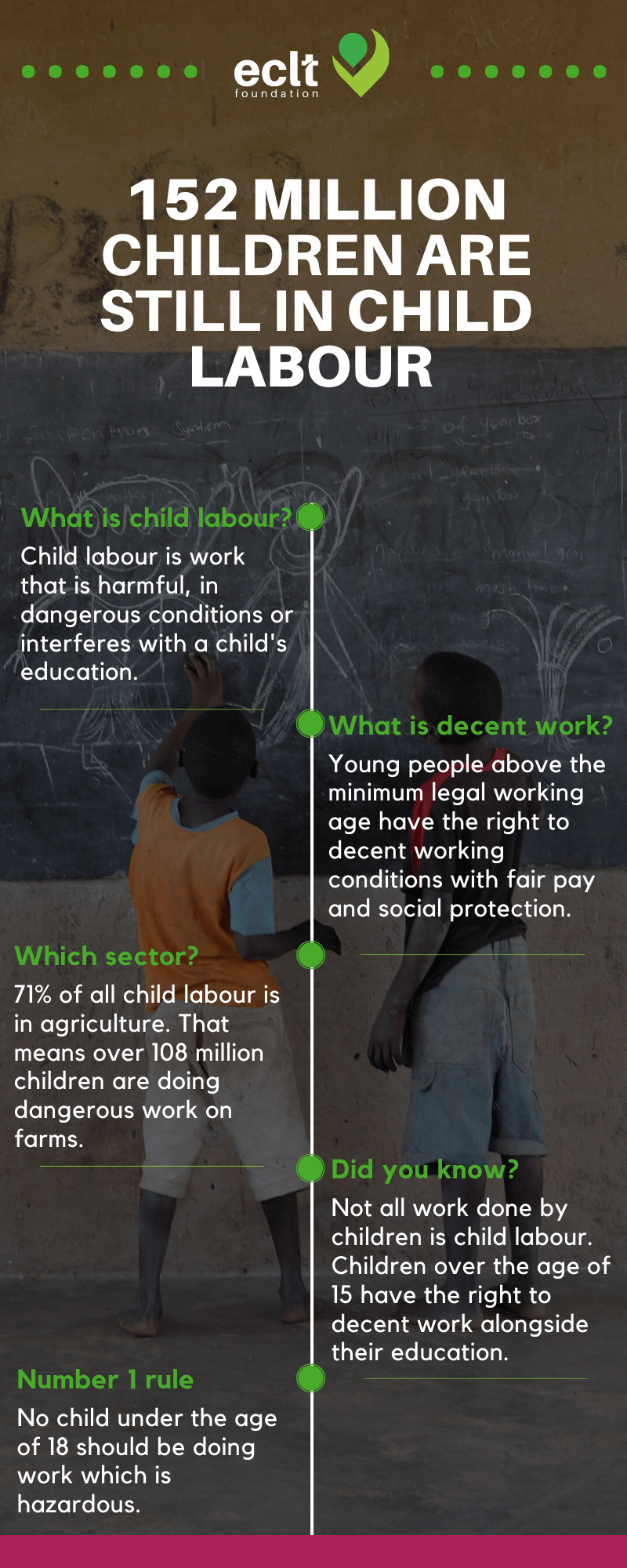152 MILLION CHILDREN Are Still in Child Labour
What is child labour?
Child labour is work that is harmful to children.
According to the UN Convention on the Rights of the Child (CRC), the most widely accepted international human rights treaty in history, “children have the right to be protected from work that is likely to be hazardous or to interfere with the child's education, or to be harmful to the child's health or physical, mental, spiritual, moral or social development.”
What is decent work for youth?
Not all work done by children under 18 is child labour
Young people over the minimum working age (usually 15) have the right to decent employment opportunities where they are not put at risk, they can earn a fair income and they have the chance to develop personally, socially and through education.
No one under 18 years-old should ever do hazardous child labour, which puts them at risk physically or mentally.
What does international law say about child labour?
Two fundamental Conventions from the International Labour Organization (ILO) set standards for governments to adopt to protect the rights set out in the CRC:
ILO Convention 138 on Minimum Age specifies the legal age that children can start working. They cannot be below the age during which they finish compulsory schooling; this allows children to develop physically and mentally before entering the workforce. This age is 15 years old, with a possible exception made for developing countries, which can allow children to work at 14 years old.
Hazardous child labour is work done by a child under 18 years old that is likely to harm his or her mental and/or physical conditions. It is one of the worst forms of child labour, as defined in ILO Convention 182 on Worst Forms of Child Labour
How many children are in child labour?
According to the latest global estimates published in September 2017 by the ILO, there are still 152 million children involved in child labour. 71%, or 108 million children, are found in agricultural sectors, including tobacco growing.









